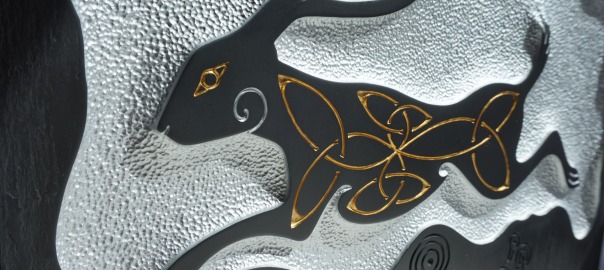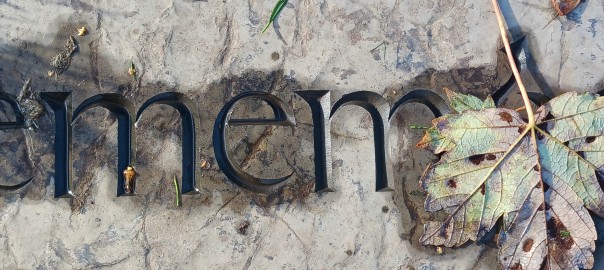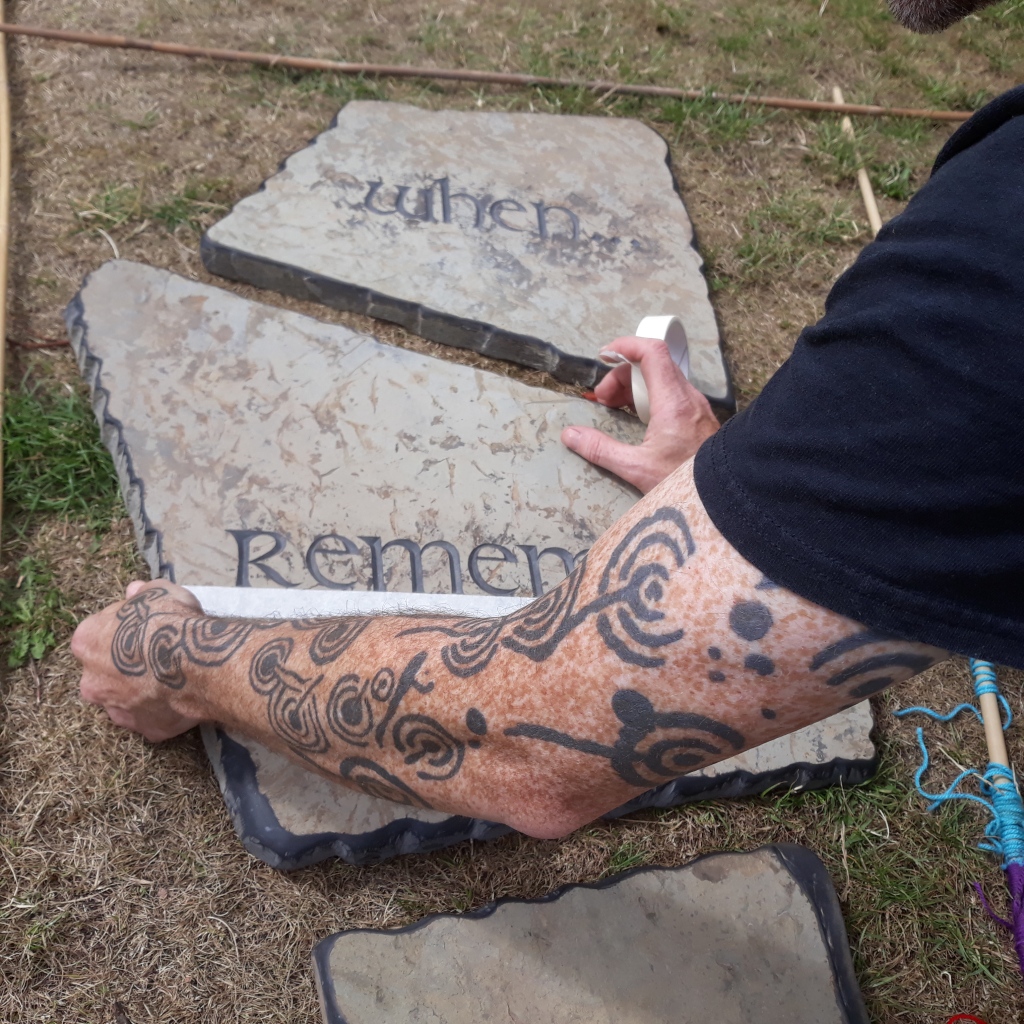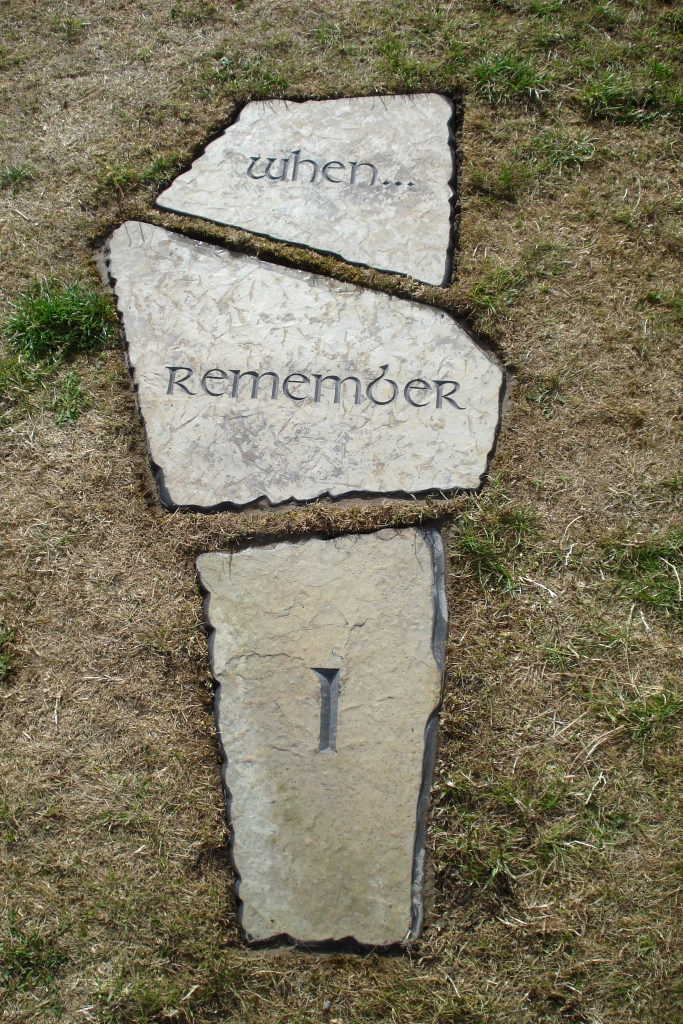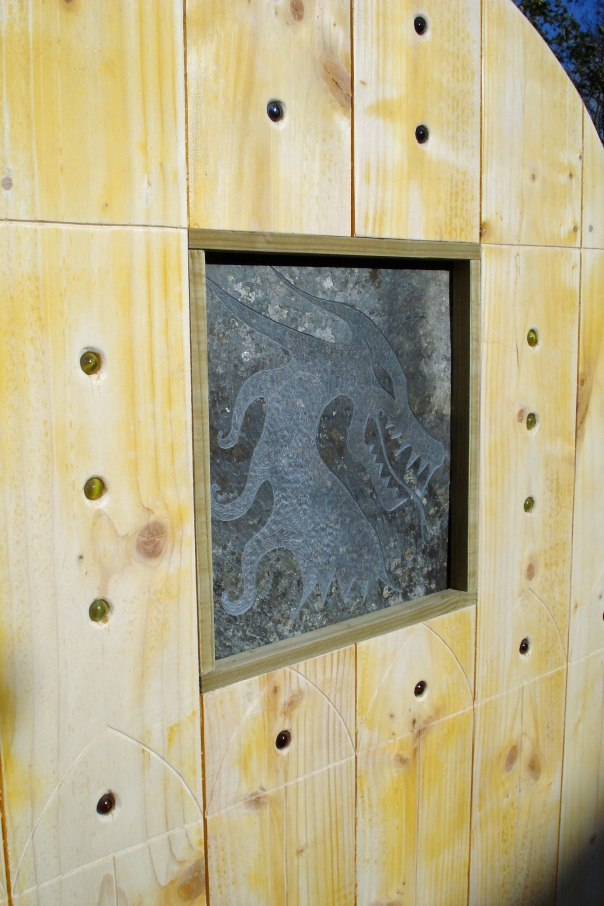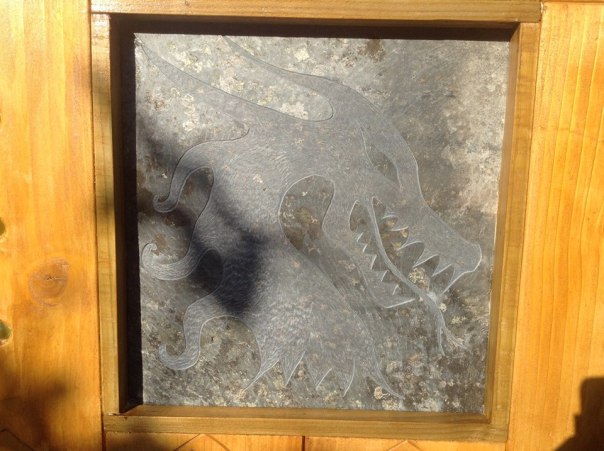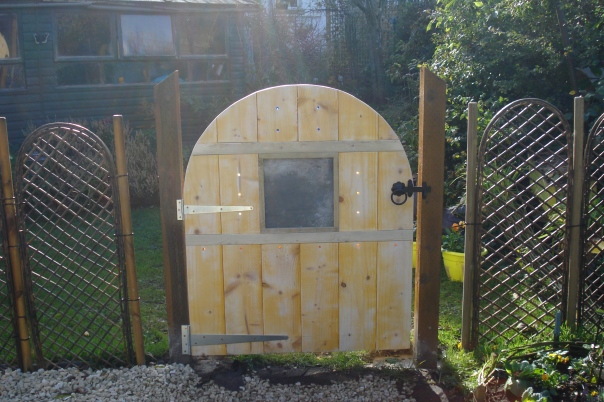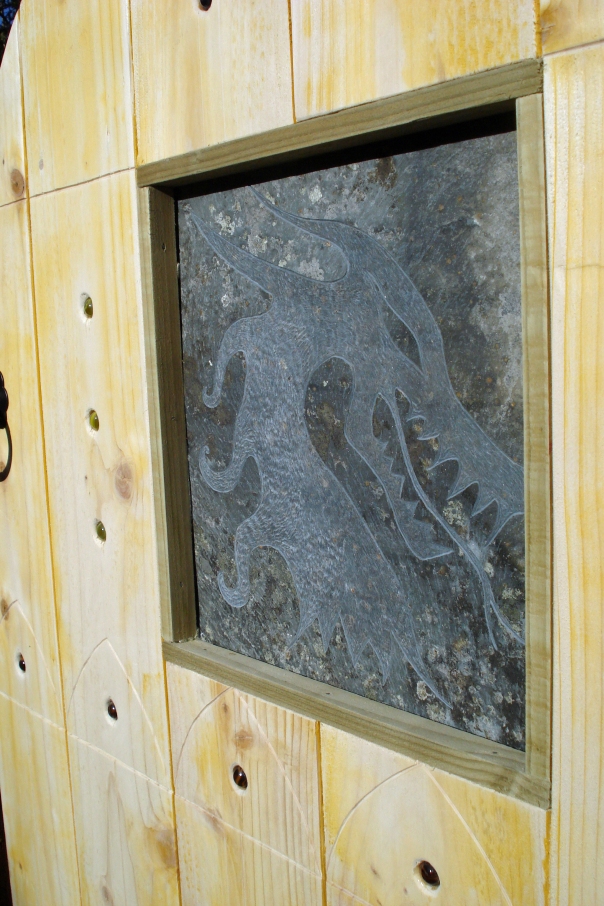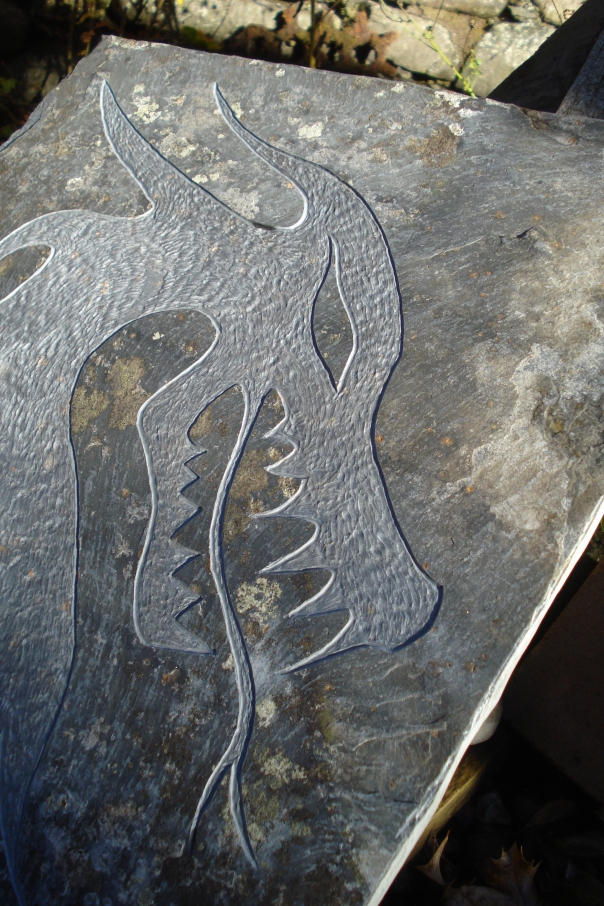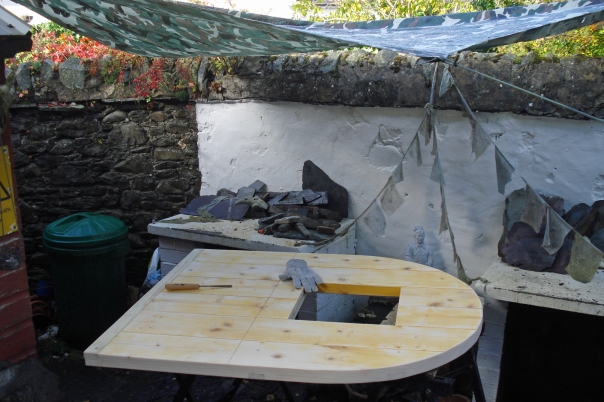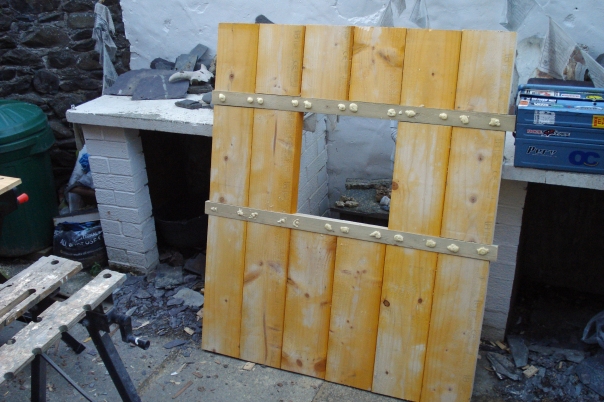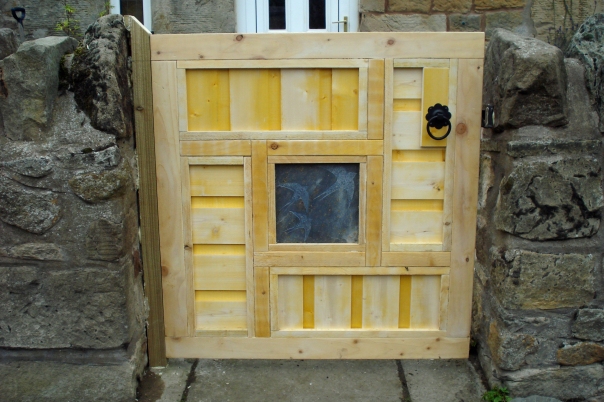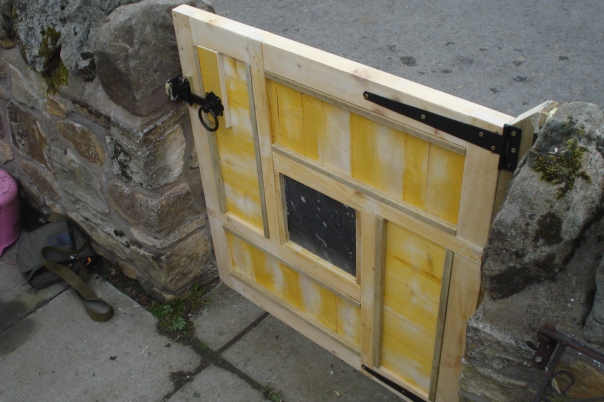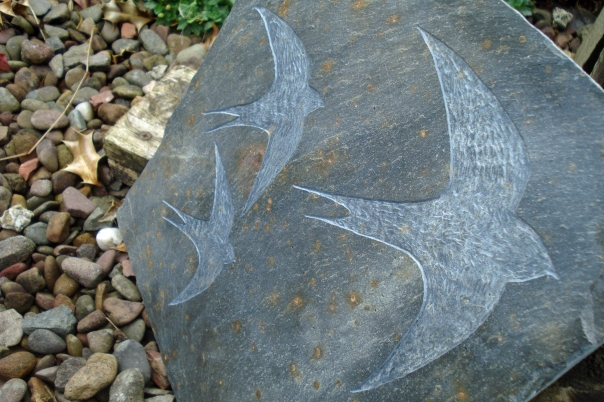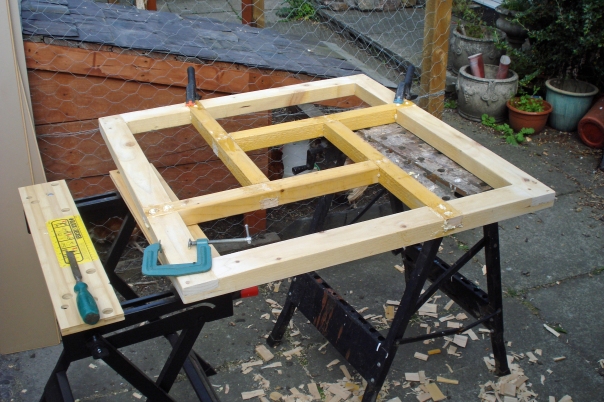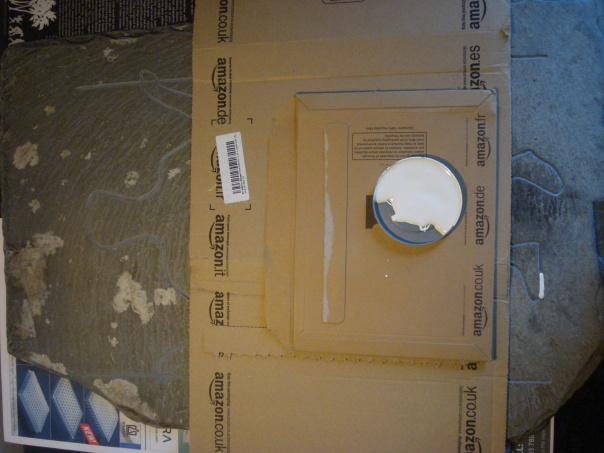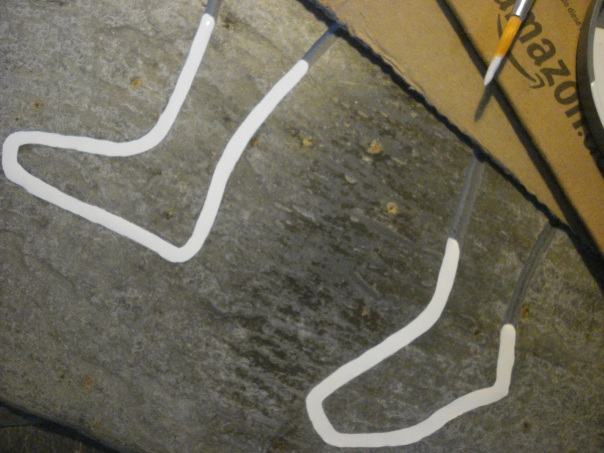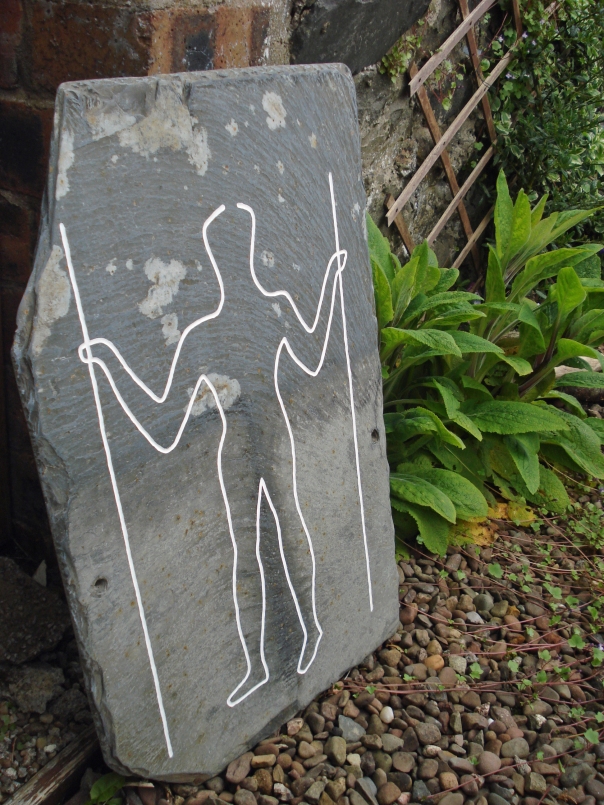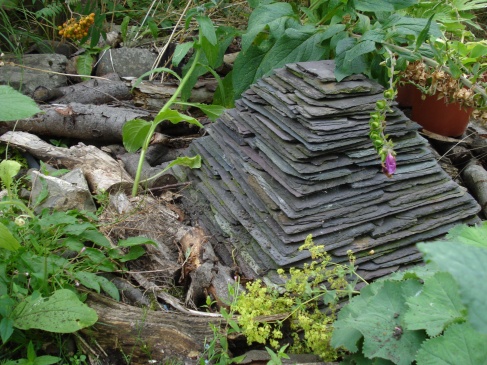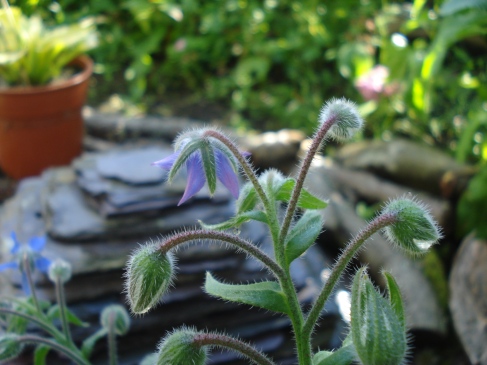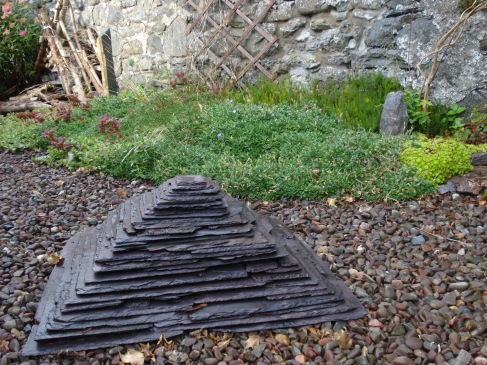‘Lepus Melangell’ (© HatchBurnCarve). Carved from a 32 x 23.5 x 2 cm piece of reclaimed slate. The carved design incorporates the outline of the hare I’ve used on a number of occasions along with a stylised Carolingian cross (consisting of four interlinked triquetras) elongated and compressed to fit within the hare.
My customer also requested a rock art design based on constellations, specifically those around the Pole Star that they see from their garden. With this in mind, the carvings below the hare are based on Polaris (the North Star) with Ursa Major (the Plough or Big Dipper) and Cassiopeia. Once I’d carved the hare and removed the material around it with bull-nose chisels, I had the idea to stipple the entire area to provide more contrast, so thousands of small indents later….! I shared images of progress with my customer at each stage and, after applying gold enamel to the Carolingian cross, they suggested a silver enamel background to contrast this, represent moonlight and continue the night sky theme.
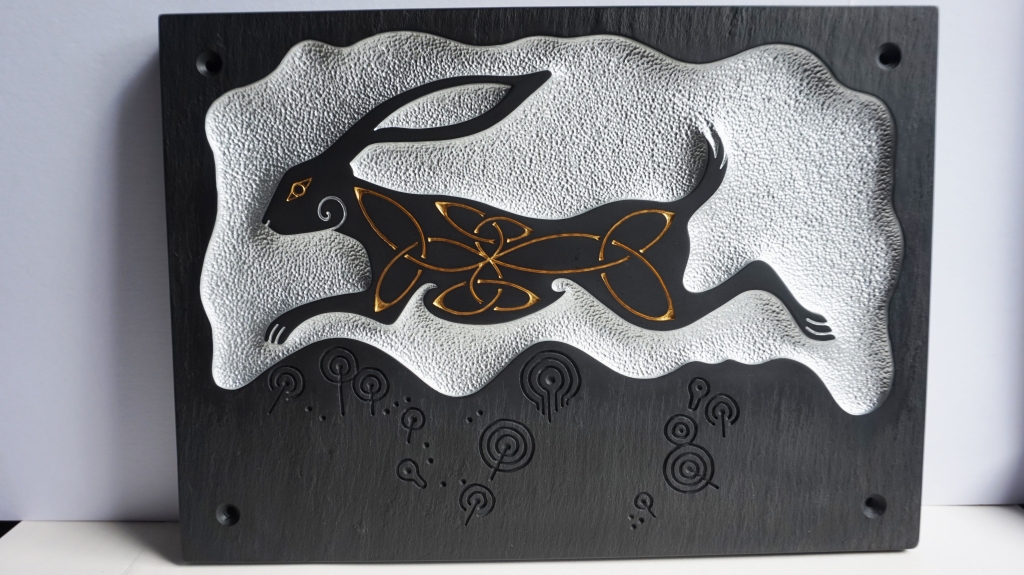
This commission was to reflect my customers love of hares as well as the shrine of St Melangell, near Llangynog in Powys. Melangell was a 7th Century saint who travelled from Ireland to live as a hermit at the site where her church now stands. According to legend, she rescued a hare that was being pursued by a pack of hounds and hid it in her cloak. Following this act of kindness, she became the patron saint of hares. As with many ancient shrines, the site of her church dates back thousands of years before Christianity came to this country. The church sits within a circular churchyard in the Berwyn Mountains, surrounded by 2000 year old yew trees encircling a site of Bronze Age burials.

